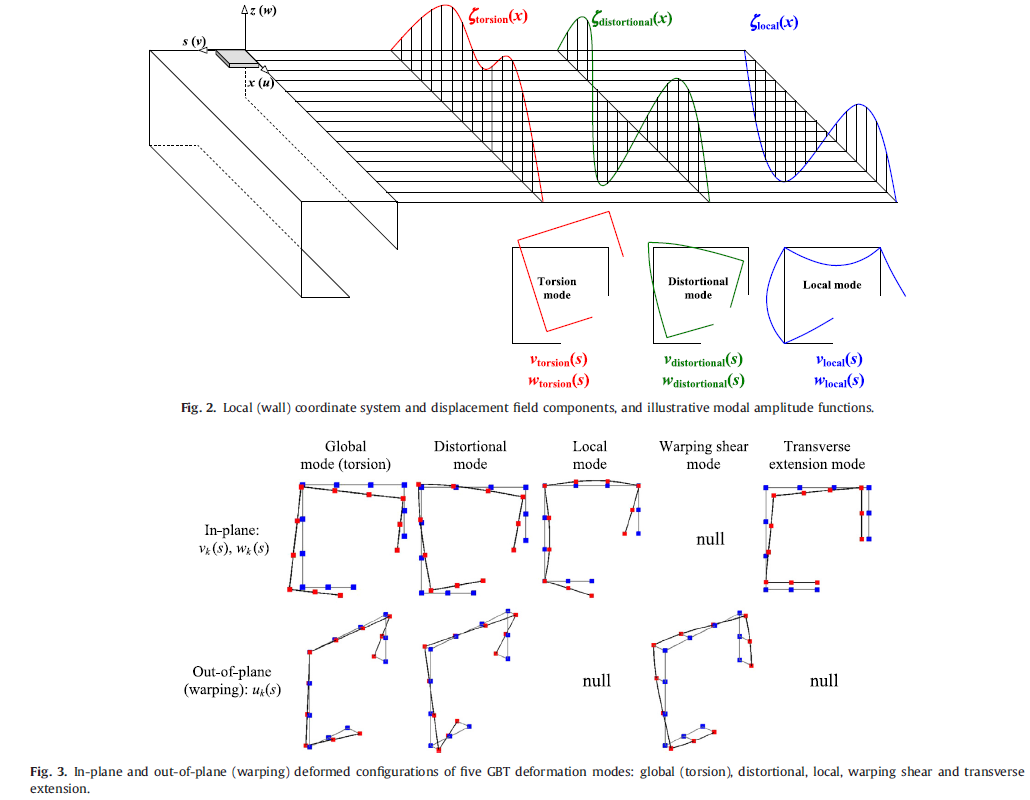Generalised Beam Theory on:
[Wikipedia]
[Google]
[Amazon]
In


structural engineering
Structural engineering is a sub-discipline of civil engineering in which structural engineers are trained to design the 'bones and muscles' that create the form and shape of man-made structures. Structural engineers also must understand and cal ...
and mechanical engineering
Mechanical engineering is the study of physical machines that may involve force and movement. It is an engineering branch that combines engineering physics and mathematics principles with materials science, to design, analyze, manufacture, an ...
, generalised beam theory (GBT) is a one-dimensional theory used to mathematically model how beams bend and twist under various loads. It is a generalization of classical Euler–Bernoulli beam theory
Euler–Bernoulli beam theory (also known as engineer's beam theory or classical beam theory) is a simplification of the linear theory of elasticity which provides a means of calculating the load-carrying and deflection characteristics of beams ...
that approximates a beam as an assembly of thin-walled plates that are constrained to deform as a linear combination of specified deformation modes
Mode ( la, modus meaning "manner, tune, measure, due measure, rhythm, melody") may refer to:
Arts and entertainment
* '' MO''D''E (magazine)'', a defunct U.S. women's fashion magazine
* ''Mode'' magazine, a fictional fashion magazine which is ...
.
History
Its origin is due to Richard Schardt (1966). Since then many other authors have extended the initial (first-order elastic) GBT formulations developed by Schardt and his co-workers. Many extensions and applications of GBT have been developed by Camotim (Instituto Superior Técnico
Instituto Superior Técnico MHSE • MHIP (IST, also known colloquially as Técnico, and stylized TÉCNICO LISBOA) is a public school of engineering and technology, part of University of Lisbon. It was founded as an autonomous school in 1911 ...
, University of Lisbon, Portugal) and collaborators, since the beginning of the 21st century.
Description
The theory can be applied without restrictions to any prismatic thin-walled structural member exhibiting straight or curved axial axis (any loading, any cross-section geometry, any boundary conditions). GBT is in some ways analogous to the finite strip method and can be a more computationally efficient method than modeling a beam with a full 2D or 3Dfinite element method
The finite element method (FEM) is a popular method for numerically solving differential equations arising in engineering and mathematical modeling. Typical problem areas of interest include the traditional fields of structural analysis, heat ...
to predict the member structural behavior.
GBT has been widely recognized as an efficient approach to analyzing thin-walled members and structural systems. The efficiency arises mostly from its modal nature – the displacement field is expressed as a linear combination of cross-section deformation modes whose amplitudes vary continuously along the member length (x axis) - see Figures 2-3. Due to GBT assumptions inherent to a thin-walled member, only 3 non-null stress components are considered in the formulations (see Fig. 1).
Membrane displacement field (i.e., in the cross-section mid-surface):
:
The GBT modal nature makes it possible to (i) acquire in-depth knowledge on the mechanics of the thin-walled member behaviour and (ii) judiciously exclude, from subsequent similar GBT analyses, those deformation modes found to play no (or negligible) role in the particular behaviour under scrutiny. Eliminating modes that play no role reduces the number of degrees of freedom involved in a GBT analysis and increases its computational efficiency. GBT has proven useful in the understanding of the structural behaviour under analysis as well as in its computational efficiency.


References
{{reflist Civil engineering Structural engineering Mechanical engineering Aerospace engineering